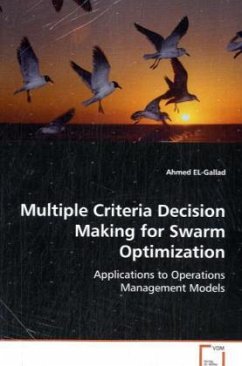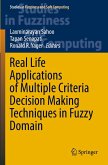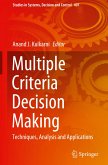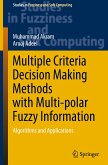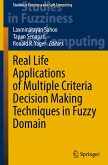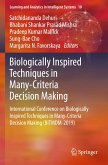This book presents a new formulation for the swarmoptimization technique as a system of autonomousagents. The proposed technique is based on anintimate understanding of swarms and animalaggregations in an attempt to simulate cognitivethinking of their members. The dynamic balancebetween gregarious and social intolerance behaviorsdemonstrated by social animals is used to form theswarm and keep its persistence. In this work, membersof the swarm are represented by agents that enjoy acertain degree of freewill to respond adaptively tochanges on the states of their swarm mates. Adaptiveresponses are reflected on the way agents move insidethe problem domain. A new set of basic behaviors isdefined, namely imitation, memory retrieval,momentum, and play. A multi-criterion decision makingprocess (MCDM) is employed to update positions ofswarm members in the problem space. Decision makingalternatives are defined from the set of basicbehaviors. Fitness and diversity characterize thedecision criteria that are used to measure theperformance of each alternative. Levenshtien editdistance is used to measure the distance betweenagents in the genotype space. Criteria are thenstandardized by means of fuzzy sets. Fuzzified valuesof criteria are aggregated by the fuzzy orderedweighted average (OWA) to reach a single evaluationfunction. The overall decision making process ismade to promote both fitness and diversity. Theproposed technique is tested using the travelingsalesmen (TSP) and quadratic assignment problems(QAP). Results and comparisons show that thetechnique outperforms the traditional particle swarmoptimizer (PSO). Also, a comparison of the proposedtechnique with the standard genetic algorithm (SGA)shows that comparable results can be obtained. Anextension of the proposed technique is also proposedto solve optimization problems with continuousvariables. For this class of optimization, a largeset of diverse benchmark problems is used to test theproposed technique. A comparison of the performancewith the simple evolutionary algorithm SEA and manyother particle swarm variants is also carried out.Results show that the proposed technique outperformsother techniques included in the comparison in almostall the tested problems.

